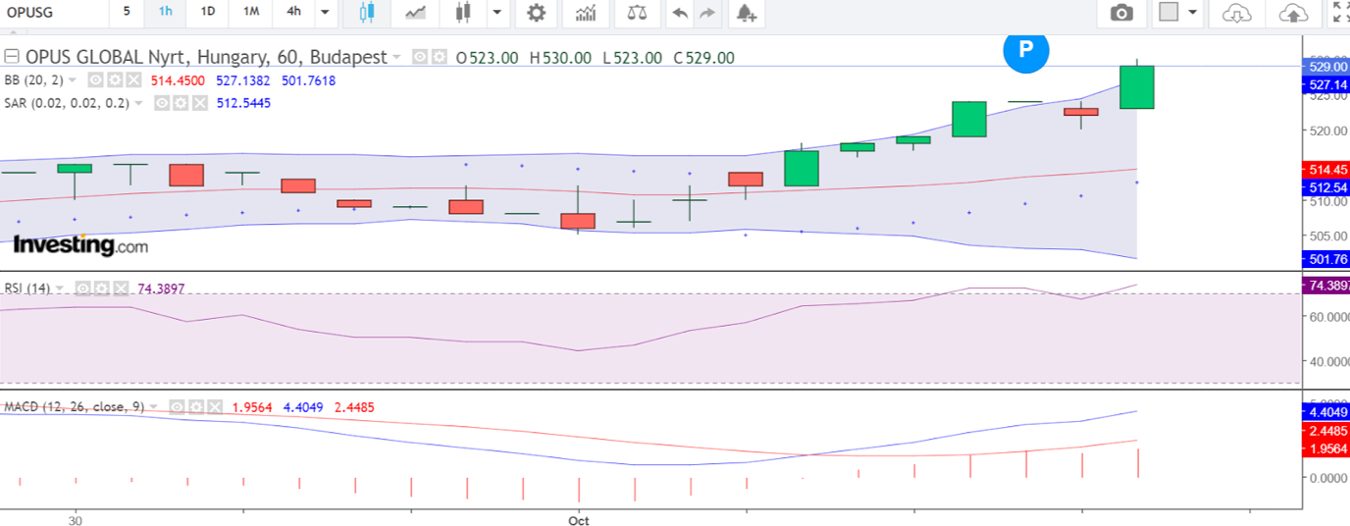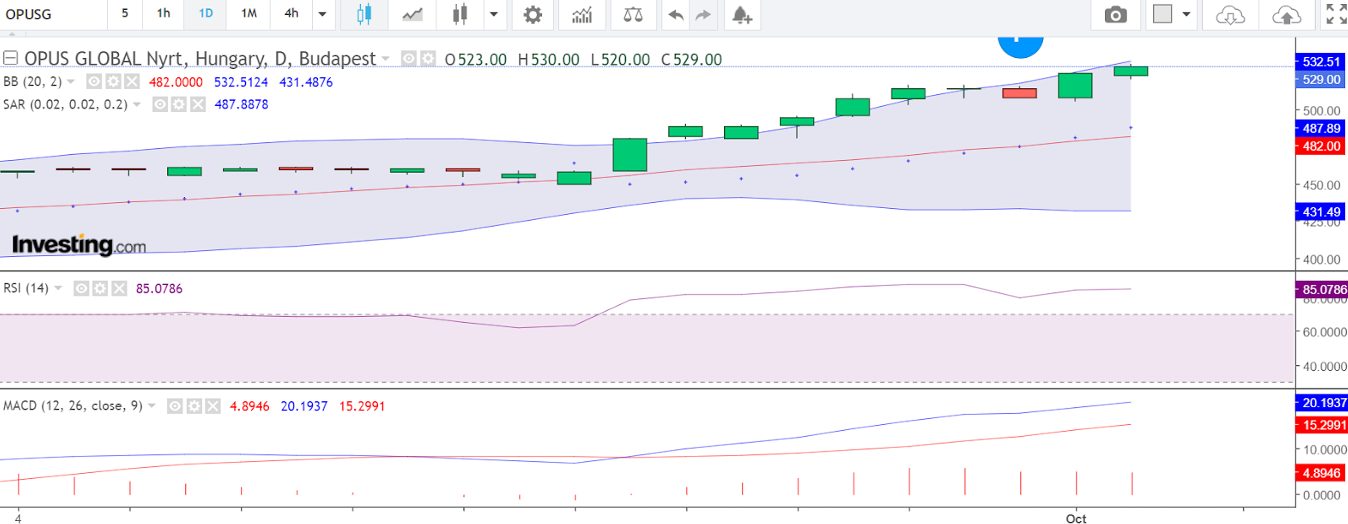CFD Trading in Hungary



Do you want to profit from rising or falling markets like Hungarian stocks? Contracts for difference (CFDs) are a popular derivative with day traders, allowing you to speculate on a range of European and global markets.
CFDs become available in Hungary in the 2000s, following their surging popularity across the rest of Europe. However, the National Bank of Hungary (MNB) has toughened restrictions on CFDs to protect retail investors, including through leverage limits and risk disclosures.
Looking to start CFD trading in Hungary? This beginner’s guide will equip you with the essentials.
Quick Introduction
- CFDs let you speculate on the price of assets like currency pairs with the Hungarian Forint (HUF). You profit or lose based on the price difference between opening and closing a position, buying if you expect a rise and selling if you anticipate a fall.
- CFDs are typically traded using leverage, meaning you can control a large position with less capital. Understand the concept of margin trading and use risk management tools like stop-loss orders to protect your investments.
- CFD trading is legal and regulated by the National Bank of Hungary (MNB), which in line with the European Securities and Markets Authority (ESMA) enforces rules to protect retail traders, notably capping leverage at 1:30.
Best CFD Brokers in Hungary
Using hands-on tests and analysis, we've pinpointed these 4 providers as the best for CFD traders in Hungary:
How Does CFD Trading Work?
CFDs provide an opportunity to trade financial markets without owning the actual asset. Instead, you predict whether the price of an asset will increase or decrease.
One of the most appealing aspects of CFD trading is leverage. This allows you to open large positions while only committing a fraction of the total value, known as the margin.
Here’s how it works: If you believe the BUX index, the official index of blue-chip shares listed on the Budapest Stock Exchange, will experience an upward trend, you’ll enter a CFD buy position.
Consider that each contract is valued at HUF 74,000 (roughly the current index price), and your trading platform asks for a 5% margin. To take a position on 10 contracts, your margin requirement would be 37,000 (HUF 74,000 per contract x 10 contracts x 5%).
If the BUX rises to HUF 75,000, the price increase would yield HUF 1,000 per contract. By closing your position, you would realise a total profit of HUF 10,000 (10 contracts x HUF 1,000), less any fees your broker charges.
However, if the index falls to HUF 73,000, you would lose HUF 10,000, demonstrating the serious risks associated with CFD trading; losses and gains are multiplied.
If you are new to CFD trading, starting with a demo account is a no-brainer.Get familiar with leverage, develop trading strategies and practice risk management through stop losses and careful position sizing.
What Can I Trade?
In Hungary, CFDs provide numerous domestic and international opportunities across various financial markets:
- Stock CFDs – Speculate on individual Hungarian company stocks, such as Delta Technologies, Magyar Telekom, and Opus Global. You can trade these leading firms as CFDs without purchasing the actual shares.
- Index CFDs – The BUX index is the official index of blue-chip shares listed on the Budapest Stock Exchange. Traders often choose index CFDs to speculate on the Hungarian market’s overall performance. Additionally, you could explore CFDs on major global indices like the Dow Jones or the NASDAQ.
- Forex CFDs – The Hungarian Forint (HUF) is traded in the foreign exchange market. You can speculate on popular currency pairs, including USD/HUF and EUR/HUF or majors like EUR/USD and GBP/USD. These later pairs, in particular, provide excellent liquidity and opportunities for short-term traders.
- Commodity CFDs – Trade commodities such as wheat and natural gas, with Hungary one of the largest exporters of wheat in Europe, while its economy is heavily reliant on natural gas imports, mainly from Russia.
- Crypto CFDs – The rise of digital assets has not gone unnoticed in Hungary. Trade cryptocurrency CFDs like Bitcoin and Ethereum for access to the volatile and high-risk crypto space.
Is CFD Trading Legal In Hungary?
CFD trading is legal in Hungary. The country operates under the regulatory framework of the European Union, and CFD trading is governed by the rules set by the European Securities and Markets Authority (ESMA) and the National Bank of Hungary (MNB), which oversees Hungary’s financial markets.
CFD brokers offering services in Hungary must comply with the EU’s Markets in Financial Instruments Directive II (MiFID II) and other regulations to protect retail investors.
These rules include limitations on leverage (maximum of 1:30 and lower for more volatile markets like crypto), mandatory risk disclosures (on brokers’ websites and at sign-up), and negative balance protection, ensuring that you cannot lose more than your initial deposit in HUF or EUR.
When choosing a CFD provider in Hungary, I recommend selecting one licensed by the MNB or other reputable financial authorities within the European Economic Area (EEA).
Is CFD Trading Taxed In Hungary?
Profits generated from CFD trading are capital gains and are typically subject to a 15% tax by the National Tax and Customs Authority. This applies to the net profit; you are taxed on the profit after deducting any losses from other trades.
A 13% social contribution tax (known as “szocho“) may also apply to investment income, including CFD trading. The social contribution tax has a cap, so not all investment income is subject to additional tax.
Hungarian residents must declare CFD trading profits in their annual tax return. Brokers typically do not withhold taxes for the trader, so the individual is responsible for reporting and paying taxes on their earnings.
Hungarian tax law allows you to offset losses against future capital gains within the same tax year or carry them forward to offset future gains in subsequent years.
An Example Trade
To bring this all together, I went long Opus Global, a Hungarian company listed on the Budapest Stock Exchange (BSE) under the symbol OPUS: BUD.
Opus Global is an industrial conglomerate and asset management company with subsidiaries in Hungary’s key industries. The company’s investments include hotels, an agricultural company, a construction firm, and an office property management company.
Fundamental Analysis
The firm’s sound fundamentals encouraged me to take my long day trade:
- The EPS (earnings per share) was 40.00
- The P/E ratio was low at 13.07
- Return on equity was 12%
- The gross profit margin was 21%
- The 52W share price range was 323-530
- The 1 year rise in the share price was 46%
The sentiment in the investment community for Opus Global was positive despite the share price reaching a record high over recent weeks/days, and the consensus suggests that the bullishness is deserved.
The ambitious directors, sound management, and clear plans have encouraged investors to buy, hold and buy more stock.
Technical Analysis
When I take a day trade, I prefer to use two timeframes (TFs), one higher and one lower.I also look for price action and technical indicators to support my interpretation of the lower time frame, like the 1-hour (H1), and my judgment to be supported on the higher time frame, like the Daily (D1).
When looking to day trade a suddenly trending stock, you must make a quick decision. Therefore, I rely on indicators that generate trend, momentum, volume, and volatility signals.
A combination of the MACD, PSAR, Bollinger Bands and RSI does this. Additionally, Heikin Ashi’s (HA) smoother candlestick patterns diffuse market noise and provide a clearer picture to analyze.
1 HR Timeframe
This trade was textbook-perfect regarding the information and feedback from the indicators and the execution. I look for three or four indicators to align to make a decision.

In this instance, the MACD moving averages crossed, suggesting a rapid change in momentum and sentiment; the BBs expanded, suggesting increased volume and volatility.
The RSI indicated increased volatility as the reading breached the 50 median level and eventually breached the oversold 70 area.
The PSAR ‘dots’, in classic stop and reverse mode, reversed and appeared under price, illustrating a change in direction and sentiment from bearish to bullish.
The HA candlestick pattern was also straightforward to interpret as the price action developed. The 1HR candles initially made higher lows, formed Dojis, an inverted hammer, and then, as momentum shifted, a full bullish candle formed with a small upward shadow.
D1 Timeframe
The D1 timeframe supported my interpretation of the 1HR. The PSAR, BBs, MACD, and RSI readings convinced me that a day trade was viable.
However, the RSI reading above the 70 overbought level and price breaching the upper Bollinger Band on the 1HR TF encouraged me not to hold over but to close the trade at the first signs that the momentum was fading or at the EOD (end of day) market close.

My deal ticket had the following parameters:
- Market entry order: 515
- Stop loss order: 505
- Profit limit order: 524
Bottom Line
CFD trading in Hungary offers opportunities to engage with European and global financial markets.
Yet while legal and regulated, traders must understand the regulatory framework, including leverage restrictions and investor protections. Additionally, being aware of the tax obligations, such as capital gains and social contribution taxes, is essential for compliant trading.
By adopting proper risk management strategies, staying informed, and keeping up with tax responsibilities, Hungarian traders can navigate the world of CFDs and make informed trading decisions.
To get started, see DayTrading.com’s pick of the top platforms for day trading CFDs.
Recommended Reading
Article Sources
- National Bank of Hungary (MNB)
- European Securities and Markets Authority (ESMA)
- BUX Index
- Delta Technologies
- Magyar Telekom
- Opus Global
- European Economic Area (EEA)
- National Tax and Customs Administration
- EU's Markets in Financial Instruments Directive II (MiFID II)
The writing and editorial team at DayTrading.com use credible sources to support their work. These include government agencies, white papers, research institutes, and engagement with industry professionals. Content is written free from bias and is fact-checked where appropriate. Learn more about why you can trust DayTrading.com



